MARKET OVERVIEW
Some of the important branches of the health sector globally are the global respiratory care devices market. They source devices and technologies for patients suffering from respiratory diseases. Such devices largely fall into categories including diagnosis, treatment, and management for various respiratory disorders: chronic respiratory diseases that include asthma and chronic obstructive pulmonary disease (COPD) and acute respiratory diseases such as acute respiratory distress syndrome (ARDS) and respiratory failure.
The major driving force of the global respiratory care devices market is thus the demanding needs due to very high case burdens of respiratory illnesses globally. The main causative factors are pollutions, habit of smoking, aging populations, and lifestyle transformations in driving growing incidence rates in respiratory disorders, which are contributing to increased demand for next-generation respiratory care products.
This is among the strong reasons for the scientific transformation in the industry of coming to terms with the needs of modern-day patients and medical practitioners. Components of the global respiratory care devices market. Diagnostic devices are one of the essential segments in the global respiratory case devices market. These include spirometers, peak flow meters, gas analyzers, and others playing a critical role in evaluating functional outcomes of the lungs and the existence diagnosis of respiratory disease, and they measure lung capacity, airflow, and gas exchange according to the needs of the individual case.
Therapy devices comprise the greater part of the market. Mechanical ventilators such as CPAP devices, nebulizers, and devices for oxygen therapy fall into these categories and are among the most important therapeutic tools used for managing respiratory disorders. These devices teach patients the method of breathing more clearly without constricting airway passages while still receiving oxygen to keep their respiratory functions most healthy possible.
The global respiratory care devices market complements a wider array of monitors and consumables that are all required for continuous respiratory care. These consist of pulse oximeters, capnographs, and respiratory rate monitors to enable continuous monitoring of the patient's respiratory status for early interventions and adjustments of therapeutic strategy. Examples of such products consumed would be oxygen masks as well as a plethora of accessory products such as tubing and filters which are essential parts of delivering a safe and effective therapy.
Technology in recent years has acted as a catalyst for driving innovation within the Global Respiratory Care Devices--speeding processes, making them efficient, and simplifying work. Such rapid change, together with the advent of new technologies including miniaturization, merging networks with wireless connections, and incorporation with a digital health platform, have facilitated breathing health devices' increased penetration and effectiveness for patients to become involved with self-management and remote monitoring of their conditions.
The Global COVID-19 pandemic also has been underlining the fundamental need for respiratory care devices at the times when patients need it the most for treating those having to do with distress in respiration and managing patients with mild to severe respiratory-related conditions. It is during that time that the demand for ventilators, inhalation equipment, and even airway clearance solutions rose all at once, thus presenting to the world the basic important role by this particular field of respiratory care in public health and saving lives.
A very fast-moving and indispensable sector in health care today is the global respiratory care devices market. It caters to all varieties of needs and extremely complicated and multiple needs of individuals who suffer from respiratory disorders. The industry is thus moving towards diagnostic, therapeutic, and monitoring innovations that are transforming patient outcomes, improving patients' quality of life, and advancing respiratory health worldwide.
Global respiratory care devices market is estimated to reach $44396.2 Million by 2032; growing at a CAGR of 7.9% from 2025 to 2032.
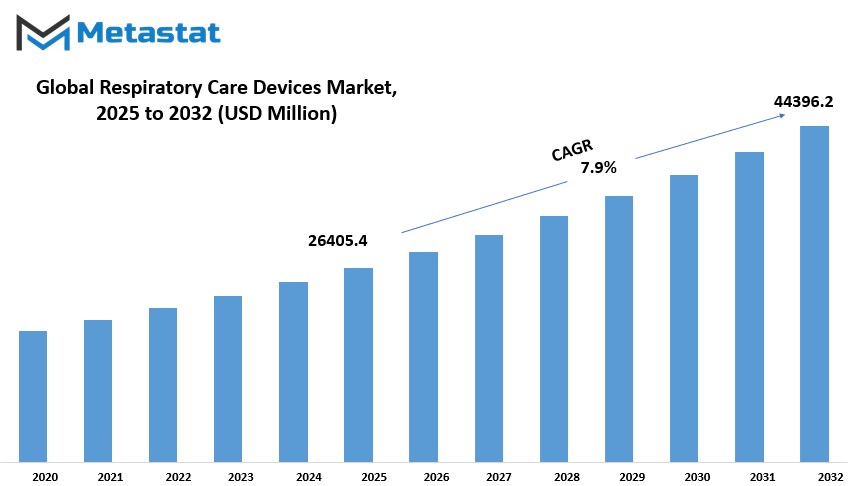
GROWTH FACTORS
Two main growth factors for the global respiratory care device market are expected to be the increasing worldwide incidence of respiratory disease and the ongoing development in technology. The two are further aspiration demands for effective management of various respiratory conditions through respiratory care devices.
Currently, pulmonology is rampant concerning the demographic stage of different diseases that are being treated and developing types of advanced respiratory care devices available for diagnosing, monitoring, and treating these conditions. Some of the diseases that are lung-related include asthma, COPD, pneumonia, and respiratory infections. Some of the key drivers of the disease burden include air pollution, cigarette smoking, aging, and lifestyle changes. This trend has eventually boosted the demand for advanced respiratory care devices that will be able to diagnose, monitor, and treat the above conditions.
With ongoing technological advancement, new respiratory care equipment has been invented that improves efficiency, precision, and comfort for patients. Wireless communication, digital sensors, and real-time monitoring are now the characteristic feature of these advancements. These characteristics enable healthcare providers to provide more personalized and prompt responses in handling patients.
However, on the brighter side of the global respiratory care devices market, there is also a thorns crop for growth. In this regard increasing monitoring by the regulatory bodies, such as FDA (Food and Drug Administration) and EMA (European Medicines Agency), with respect to regulatory requirement as well as product approval. Such regulations guarantee that respiratory care devices are safe, effective, and of good quality; however, the lengthy and complex approval process often delays market entry and increases the development costs for manufacturers.
Besides these, the advanced respiratory care devices which are expensive form obstacles against market growth especially in developing regions which have poor healthcare budgets. Access and affordability of such devices usually become major issues, especially to patients from low-income countries who could not meet treatment costs.
Regardless of all of the statements previously made, the market for respiratory care devices is well positioned for an excellent future upswing, riding on new avenues that technology and evolving health care have opened. Emerging avenues of opportunity include the growing addition of telemedicine and remote-monitoring solutions as means of delivering respiratory care services remotely without any physical visits.
Telemedicine allows for video-conferencing-type consultation between a patient and healthcare provider to eliminate the need for the parents' attendance and allows for easy access to services. Remote monitoring devices, including wearable sensors and home spirometers, enable patients to keep track of their respiratory health and transmit this data to their healthcare providers in real-time. Early intervention and personalized treatment plans result from this.
Ongoing advances in technology coupled with surging respiratory disease prevalence will be the driving forces for the global respiratory care devices market. Market growth will, however, be cautioned by threats such as regulatory requirements and high-cost products. On the other hand, the future will be favorable for expanding the telemedicine and remote monitoring markets. Thus, addressing these challenges along with capitalizing on the new trends will allow manufacturers as well as healthcare providers to respond to the demand for respiratory care devices and improve patient outcomes at a global scale.
MARKET SEGMENTATION
By Product
Basically, the global respiratory care devices market divides its products into therapeutic devices, monitoring devices, and diagnostic devices. These categories distill the range of instruments and equipment for use in respiratory care.
Therapeutic devices are mechanical or electrical devices designed in specific ways to either aid the treatment of or relieve symptoms of respiratory diseases or the delivery of the therapeutic agent or support the functionality of the breathing airways of the patient. Treatments of respiratory diseases through a host of therapeutic devices or instruments are satisfactorily achieved through inhalers, nebulizers, CPAP machines, and ventilators that help to administer medication to patients suffering from asthma, COPD, or sleep apnea while allowing for the free flow of air into their lungs.
On the flip side, monitoring devices are used to measure and monitor the respiratory conditions of patients. The collected data will allow the health care provider to describe a patient's breathing pattern, oxygenation, and lung function. Such devices include pulse oximeters, capnographs, and spirometers. Such a close watch will, in turn, help the health care provider understand how effective treatment has been, which will help guide the decisions regarding the subsequent care of that patient.
Diagnostic devices evaluate and diagnose accurately. They assist health care providers in determining lung function abnormalities and establishing the causes of respiratory signs and symptoms. Diagnostic devices, i.e., peak flow meters, bronchoscopes, and polysomnography machines, are major influences in confirming the diagnosis of asthma, bronchitis, and pneumonia, or sleep disorders.
Knowledge about the different classes of respiratory care devices helps healthcare professionals understand their applications and functions. Therapeutic devices intervene to apply treatment and support respiration; monitoring devices track patient progress and assess respiratory status; and diagnostic devices assist accurately in identifying and diagnosing conditions pertaining to respiration.
The classification and segmentation of the global respiratory care devices market by product shows the vast diversity of different tools and equipment offered to the healthcare provider. Each class is assigned for a specific purpose to manage and treat respiratory disorders so that patient outcomes and quality of life may be enhanced. With the technology further empowering innovation in respiratory care, the development of these myriad of devices will allow healthcare professionals aplenty in their ability to diagnose, monitor, and treat respiratory conditions efficiently.
By Application
Respiratory care equipment: For patients struggling with a host of respiratory problems. Applications include Chronic Obstructive Pulmonary Disease (COPD), sleep apnea, asthma, infectious diseases, and many more.
In other words, COPD restricts airflow causing difficulty in breathing for the person suffering from the disease. Agents causing such ailments tend to irritate the lungs over a long time such as cigarette smoke; chronic bronchitis and emphysema fall under these categories. Therefore, respiratory care devices aim to help patients breathe easier and feel comfortable, but not necessarily improve their actual living situation.
Apnea is the condition wherein during sleep, a person breathes on and off or breathes shallowly for a length of time. These pauses may occur many times in an hour that fragmentation would happen to their sleep, hence causing tiredness by day. If found guilty of sleep apnea, the situation will be more likely remedied through the use of CPAP machines; thus the equipment will keep airways open so that air may flow through unchallenged as the patient sleeps."
Asthma is a chronic condition gesturing wheezing, constricted breathing, tightness in the chest, and cough. A chronic respiratory disorder will inquire for a respiratory device, inhaler or nebulizer, to deliver medication into the airways for symptomatic relief or for innovation of an attack.
Others would fall under the category of Infectious Respiratory Diseases, such as operating pneumonia and tuberculosis. These may cause complications with the inflating of the lungs and the buildup of fluid inside them. This would extend the necessity for the respiratory care apparatus involving mechanical ventilators and oxygen therapy apparatus to deliver oxygen and ventilation while assisting the body as the infection continues to cause damage to the lungs.
Wider conditions not elucidated thus far are fitting in the profile of those pulmonary disorders on which respiratory care devices could be useful in a variety of therapeutic interventions. It would also generally include quite a number of other respiratory diseases that are treatable by those devices, i.e., cystic fibrosis and pulmonary fibrosis, as well as therapeutic interventions such as airway management and pulmonary rehabilitation.
Overall, the global respiratory care devices market is an economic lifeline for patients with many different types of respiratory disorders such as chronic COPD, asthma, etc., through to life-threatening diseases such as pneumonia. The devices enable the patient to breathe easily, thus further improving the quality of life and averting complications due to respiratory disorders. Also, an increase in the prevalence of respiratory diseases worldwide will further fuel demand and use of respiratory care devices, thereby spurring research and development of respiratory medicine.
By Diagnostic Devices
The global respiratory care devices market covers a range of diagnostic equipment, such as spirometers, polysomnography equipment, and peak flow meters. These devices are highly crucial in the evaluation and monitoring of respiratory condition.
Spirometers can be described as machines that quantify lung function in terms of the amount of air inhaled and exhaled from the lungs. Spirometers are often applied in the diagnosis of asthma, chronic obstructive pulmonary diseases (COPD), and other respiratory diseases. Spirometry tests are conducted at the office, clinic, or hospital, and even at home while portable monitoring of lung function for a specified duration.
Polysomnography equipment, however, is mainly used in the diagnosis of treatment-induced sleep disorders, e.g., sleep apnea. The equipment records a number of physiological parameters while asleep, recording airflow, effort to breathe, oxygen saturation, and brain waves. Following analysis of these findings, the practitioner will diagnose potential sleep disorders and suggest treatment procedures.
The global respiratory care devices market comprises different diagnostic devices like spirometers, polysomnography equipment, and peak flow meters which are very important in evaluating and monitoring respiratory condition.
Spirometers Machines that measure lung function concerning the amount of air that a person inhales into and exhales from his lungs can be termed as spirometers. Diagnosis of asthma, chronic obstructive pulmonary diseases (COPD), and other respiratory diseases are often made with the help of spirometry. When administered at an office, clinic, or hospital, or even at home, it could include portable procedures for monitoring lung function over a given period.
Polysomnography equipment, on the other hand, is primarily for the identification of treatment-induced sleep disarrays, for instance, sleep apnea. While a person sleeps, the equipment records airflow, effort to breathe, oxygen saturation, and the electrical activity of the brain. Discussing these data with the practitioner allows an indication of probable sleep disorders and suggests their treatment.
Portable instruments for quantifying maximum airflow rate that a patient can produce on a forced expirational effort are referred to as peak flow meters. Peak flow meter measurements are regularly utilized by asthmatic patients to monitor their lung function and identify changes in airway obstruction or narrowing. They are convenient and simple to carry and handle, which makes them useful to utilize in the management of asthma symptoms independently.
All these diagnostic equipment are serving their specific purposes in respiratory care. They assist the specialist with knowledge to improve accurate diagnosis and management of respiratory conditions. Such information enables interventions at an early stage, leading to individualized treatment plans for every patient with respiratory disorders.
The respiratory therapy equipment globally would hence comprise therapeutic equipment for enhancing lung functions and symptom relief. Such therapeutic equipment consists of continuous positive airway pressure (CPAP) machines, nebulizers, and oxygen concentrators and can even go so far as to include ventilators.
CPAP machines were originally developed to cure obstructive sleep apnea, providing air through the mask on a continuous flow from the pump to the patient in a lying down position. The airflow assists in maintaining the airway open hence avoiding apneic attacks and enhancing sleep. Nebulizers are devices that convert liquid medicine into aerosol or fine spray for inhalation into the lungs to relieve respiratory symptoms like wheezing and shortness of breath.
Oxygen concentrators absorb oxygen from the surrounding air and supply it to patients who need supplemental oxygen therapy. They are widely used in the management of COPD, pulmonary fibrosis, and acute asthma. Ventilators assist patients with insufficient breathing as a result of respiratory failure or other illnesses.
The respiratory equipment, combined with diagnostics and therapy, unite to assist in the treatment of different forms of respiratory diseases and enhancing the quality of life of patients wherever in the world. While respiratory conditions are deteriorating on one front, the utilization of these devices will flourish on the other, thereby opening up avenues for technology and innovation to develop in the field of respiratory care.
By End Use
Globally, the respiratory care devices market is segmented on the basis of the end-users into three major categories: Point of Care; Hospitals; and Clinics. These three categories each support effective worldwide delivery of respiratory care solutions for the patients.
Point of Care refers to respiratory care device applications beyond the bounds of medical facilities; it can be home care or community health centers. Point of Care devices are necessary for those patients who require respiratory management intermittently but cannot attend the hospital or clinic for any complete treatment due to the nature of their conditions. Such technologies include portable oxygen concentrators, nebulizers, and CPAP machines for home use, by which patients can manage their respiratory conditions at home.
Hospitals make up the other segment of places where respiratory care devices are used in the provision of acute care services at medical establishments. Within hospitals specifically treating patients with severe respiratory disorders, such as pneumonia or exacerbations of COPD, or among patients with ARDS, a variety of respiratory care devices is used: mechanical ventilators, oxygen delivery systems, and airway clearance devices. It is through the use of such devices that one is able to maintain the breathing and respiratory functions of a patient during critical care management.
The Clinic segment refers to outpatient health centers in which respiratory care services are provided on a more routine basis. Clinics are responsible for individuals who have chronic respiratory complaints, such as asthma, bronchitis, or sleep apnea, who constantly monitor and manage their status. Some of the most commonly used respiratory care devices in clinics are spirometers, peak flow meters, and continuous positive airway pressure (CPAP) devices. With the help of these machines, healthcare practitioners will be able to assess lung functions, track the progress of the afflictions, and personalize therapies to improve the quality of life for their patients.
The global respiratory care devices market diversified into end-user segments for different health care settings and, hence, different patient populations. While Point of Care brings in the convenience of the patient, the life-saving critical care interventions are made at level 1 in Hospitals and, at best, managed at Clinics for a routine follow-up.
These respiratory care devices play an indispensable role among the diversified needs of patients with respiratory diseases all over the globe. With advancements in technology that herald innovations in this area, the availability and reach of respiratory care devices are bound to increase, which again would greatly improve the standard of care for patients-in-general all over the world.
|
Forecast Period |
2025-2032 |
|
Market Size in 2025 |
$26405.4 million |
|
Market Size by 2032 |
$44396.2 Million |
|
Growth Rate from 2024 to 2031 |
7.9% |
|
Base Year |
2024 |
|
Regions Covered |
North America, Europe, Asia-Pacific, South America, Middle East & Africa |
REGIONAL ANALYSIS
The global respiratory care devices market is segmented regionally, with one regional segment being North America, while Europe acts as another important competitor. Each of these regions presents a different set of opportunities and challenges for companies active in the broad field of respiratory devices.
North America has been provided with a distinguished placement in the global market owing to varied reasons like advanced health infrastructure, high expenditures on health care systems, and a huge population of patients suffering from respiratory diseases. In addition, an increasing number of patients are becoming aware of the importance of respiratory care, which in turn increases the demand for ventilators, nebulizers, and CPAP machines. Everything is complemented in the North American market by favorable reimbursement policies, as well as government initiatives in favor of respiratory diseases and devices.
The European countries are pivotal for a global respiratory care devices market. With a smoothly functioning healthcare setup, Europe too suffers from high incidences of respiratory diseases as in North America. Active patient populations and sound health infrastructures in Germany, the UK, and France earn an enormous contribution to the market. The presence of top manufacturers along with the technological progress do contribute to the markets in this regard.
However, in connection with their role, the breath devices market enables some challenges in North America and Europe. One of the challenges is the rising cost of healthcare, which restricts advanced devices from being adopted in particular paramedic countries. Further, another granite hurdle to companies wishing to enter here is the outpour of regulatory requirements and standards applicable to medical devices.
The overall respiratory care device market in the regions other than North America and Europe are now on the rise in the Asia-Pacific region, Latin America, and the Middle East and Africa. Demand for respiratory care devices in the Asia-Pacific region is increasing rapidly-largely owing to the phenomenal urbanization, shifting lifestyles, and heightened pollution levels in that region-networking back to the outbreak of respiratory disease. Equally improving healthcare infrastructure and growing awareness of respiratory health are the two market-developmental factors for Latin America and the Middle East and Africa at present.
Each of the regions present their own unique scenarios of opportunities and challenges for any company operating in the global respiratory care devices market. The companies need to have an understanding of the market dynamics, regulatory environment, and consumer behavior in each region for them to succeed and to expand their global presence. Capitalizing on the rising demand for respiratory care devices by fulfilling various needs in different regions will, in turn, enhance patient outcome across the globe.
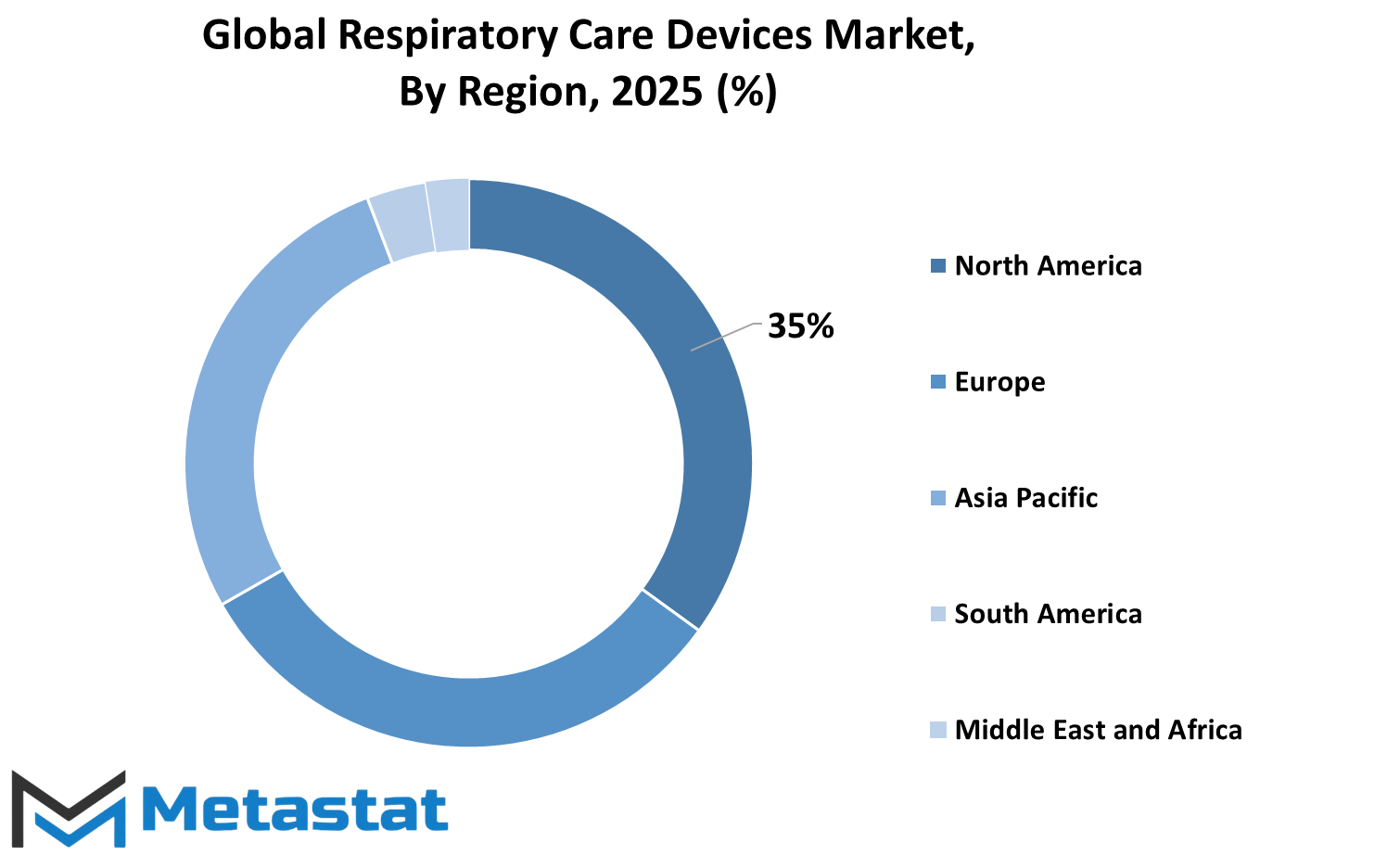
COMPETITIVE PLAYERS
There are many major players in the global respiratory care devices market. These companies are responsible for innovation, product quality, and competition in regional markets. In fact, the much-talked-about ones in this context are Drägerwerk AG & Co. KGaA and Fisher & Paykel Healthcare Limited.
Drägerwerk AG & Co. KGaA is one of the costlier organizations in the field of respiratory care devices. It has committed itself to very fine research-and-development-and-manufacture field for excellent respiratory care equipment, which has earned the commendation of leadership. The equipment has been reported to provide a very dependable and efficient way of treating respiratory troubles. It is, therefore, highly competitive in the market concerning the use of its effective equipment for the respiratory technologies market.
The company is yet another significant competitor in the respiratory care devices market, Fisher and Paykel Healthcare Limited. Products in this line include dedicated devices such as masks, humidifiers, and related devices for respiratory care, designed to have a reputation for improving patients' quality of life suffering from various respiratory diseases. Innovating products allow Fisher & Paykel Healthcare Limited to actively engage in the competition at the global level.
It is not that other competing players alone drive the industry but with continuous innovation and improvement of their products and services, such presence inspires further innovation that will lead to others upgrading their offerings to remain competitive. All these players further add to market growth resulting in consumer benefits resulting from many choices.
The competition in the global respiratory care devices market will always depend on Drägerwerk AG & Co. KGaA and Fisher & Paykel Healthcare Limited. Innovation, quality, and customer satisfaction would spur competition and growth in the industry. As such, these primary players would become major shapers of the future in respiratory care technology while improving patients' lives.
Respiratory Care Devices Market Key Segments:
By Product
- Therapeutic Device
- Monitoring Devices
- Diagnostic Devices
By Application
- Chronic Obstructive Pulmonary Disease (COPD)
- Sleep Apnea
- Asthma
- Infectious Diseases
- Others
By Diagnostic Devices
- Spirometers
- Polysomnography Devices
- Peak Flow Meters
By End Use
- Point of Care
- Hospitals and Clinics
Key Global Respiratory Care Devices Industry Players
- Drägerwerk AG & Co. KGaA
- Fisher & Paykel Healthcare Limited.
- General Electric Company
- Getinge AB
- Inogen, Inc.
- Masimo.
- Medtronic
- Koninklijke Philips N.V.
- ResMed
- VYAIRE.
- 3B Medical Inc.
- Airon Corporation
- alpha trace medical systems
- APEX MEDICAL CORP.
- Besco Medical
WHAT REPORT PROVIDES
- Full in-depth analysis of the parent Industry
- Important changes in market and its dynamics
- Segmentation details of the market
- Former, on-going, and projected market analysis in terms of volume and value
- Assessment of niche industry developments
- Market share analysis
- Key strategies of major players
- Emerging segments and regional growth potential



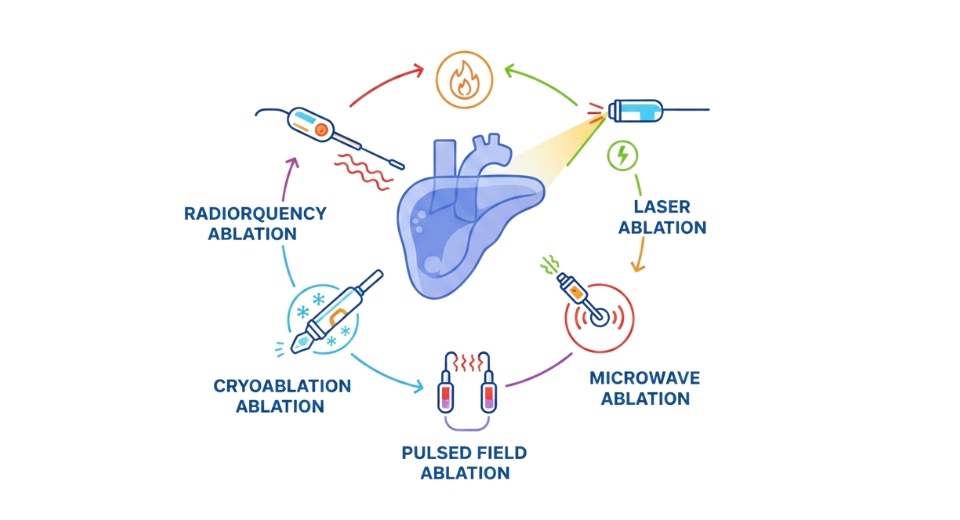

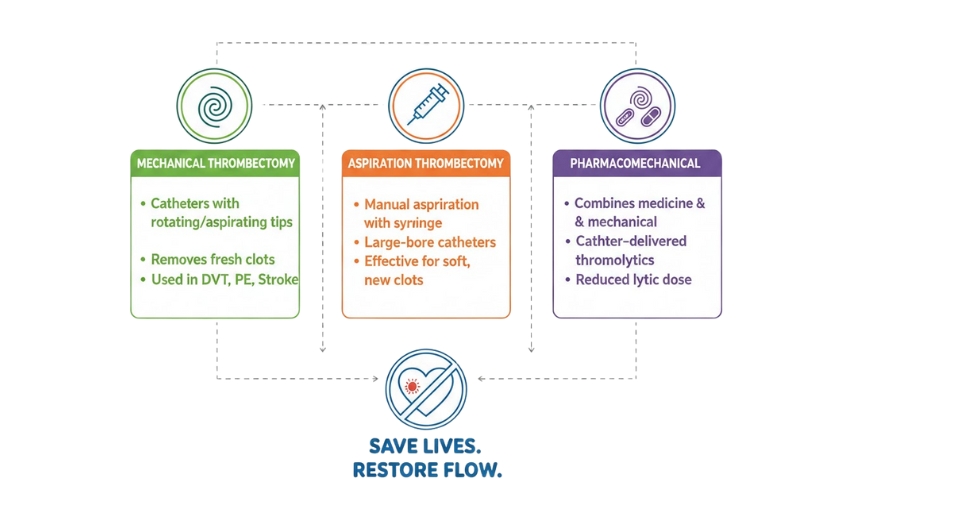
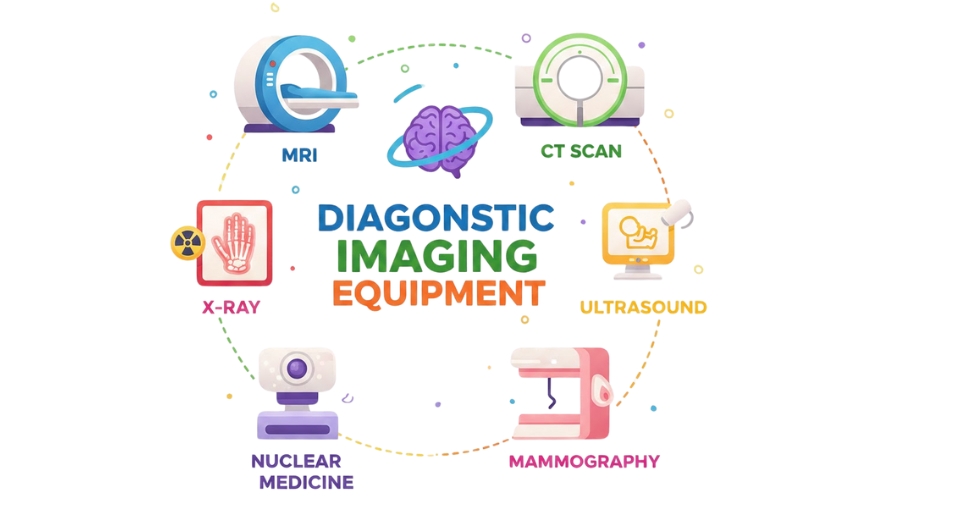

 US: +1 3023308252
US: +1 3023308252






